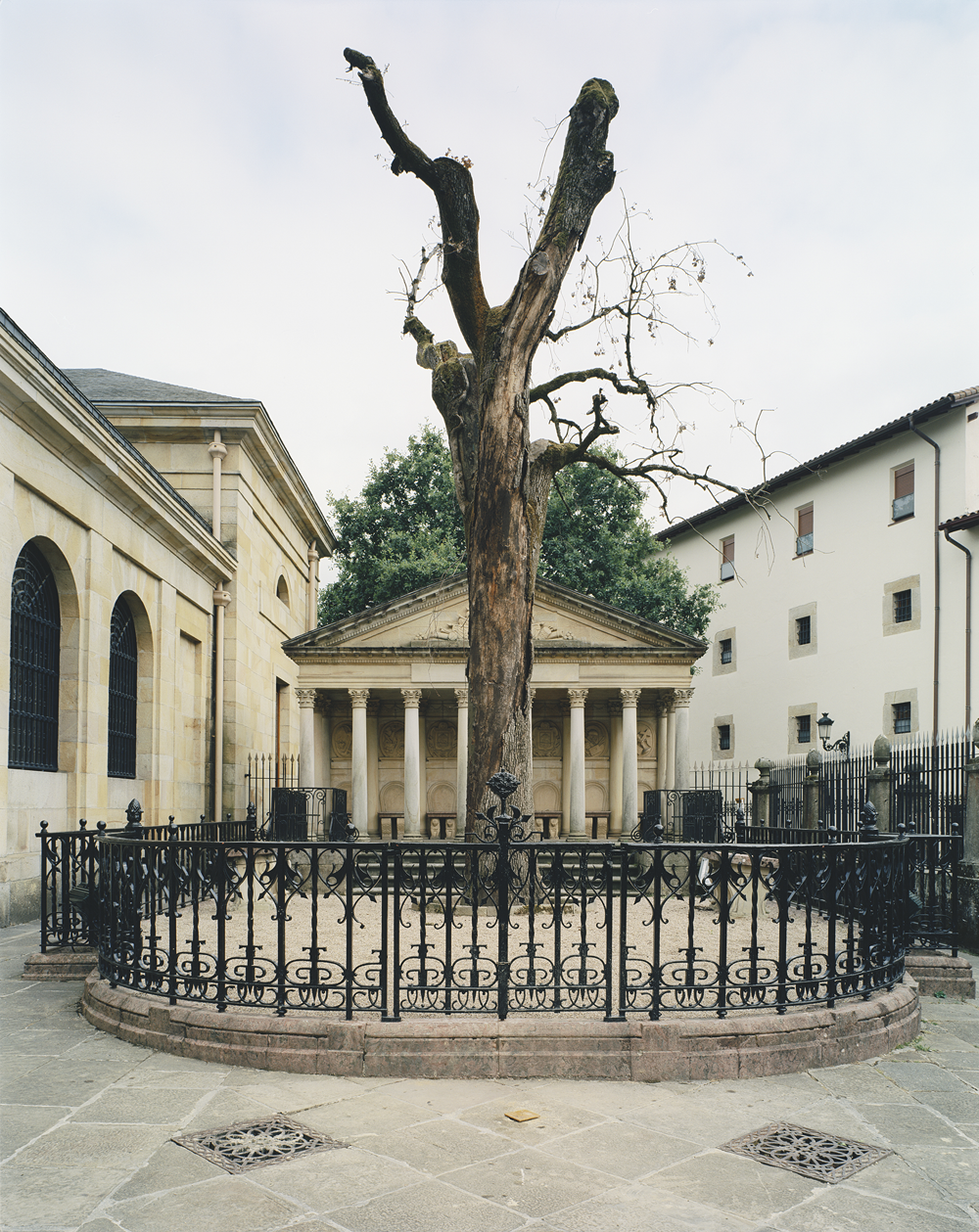

There are images that don't need much explanation, that is, one. The photograph, made using a frame known to the public, shows a marchial tree, after a wrought iron gate, in the atrium of a building of neoclassical style. The tree is at the center of the photograph, and the escape point takes our gaze at the foot of the trunk, to rise and collapse from dead branches back to the ground and back up to the hypnotic loop.
Gernika's tree is dead.
The force of the icons is enormous, and although we despise their influence on us, saying that we know that they are symbols, that they are built, that we are able to go beyond a closed sense, that we cannot give them power, that we cannot let ourselves act upon us, that it is nothing but a dry tree, in this case, etc., the symbol does its work as well.
Mikel Eskauriaza Bareño (Bilbao, 10 April 1969) is an artist who performs his artistic work through photography. He has been involved in photography and landscape since the 1990s. It uses photography to observe, document and interpret phenomena and processes of the territory, as well as its physical, political, economic and symbolic consequences.
From the documentary point of view, he does not lack humor or irony in his works, he likes to make critical readings. The photo you see here is a good example. Yes and BAPORAS. The Basque fleet also works in the Indian Ocean. As its title indicates, he took photographs of Euskal Herria boats fishing in the Indian Ocean, following the formal scheme of marine portraits that became common in 19th century painting. The shipowners then demanded boxes to gain legitimacy and demonstrate power.
Take photographs to help you see reality.